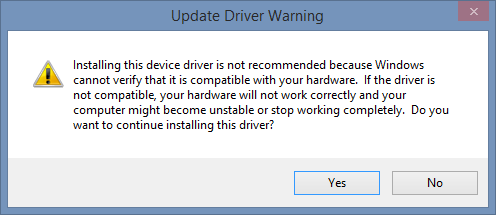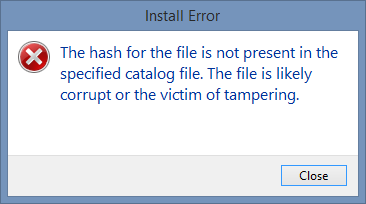Saat ini, PC hampir dipastikan menyediakan USB Port yang tentunya mendukung USB Flash Drive. USB Flash Drive memiliki kecepatan baca/tulis yang cukup baik, jauh lebih baik daripada CD/DVD yang umumnya dipakai. USB Flash Drive ini dapat dimanfaatkan menjadi media instalasi Windows. Barikut ini adalah langkah-langkah untuk membuat installer Windows 8 yang bootable pada USB Flash Drive dengan memanfaatkan Command Line.
Note: Cara berikut ini juga berlaku untuk membuat installer Windows Vista/7/8 dan juga Windows Server 2008/2012.
Persiapan
Hal yang harus dimiliki untuk membuat installer Windows 8 pada USB Flash Drive yaitu
- USB Flash Drive, berkapasitas cukup untuk menyimpan installer Windows, disarankan minimal 8 GB.
- DVD Installer Windows, dapat berupa ISO maupun Disk.
- PC dengan sistem operasi Windows.
Langkah 1: Siapkan DVD Instalasi Windows
Siapkan DVD Instalasi Windows Anda. Jika berupa piringan DVD, maka cukup memasukannya ke dalam DVD Drive.
Jika berupa ISO image, maka image tersebut harus di-mount. Pada Windows 8 ke atas, ISO dapat langsung di-mount langsung tanpa program tambahan dengan cara membuka dengan Mount dari Windows Explorer. Pengguna Windows 7 ke bawah dapat menggunakan program bantuan, seperti Daemon Tools Lite yang tersedia secara gratis.
Langkah 2: Format USB Flash Drive
USB Flash Drive akan diformat menjadi NTFS. Berikut ini adalah langkah-langkah untuk memformat USB Flash Drive.
- Masukkan USB flash drive ke komputer
- Jalankan Command Prompt dengan mode administrator (Run as administrator).
- Ketikan
diskpart
- Jalankan perintah berikut satu-per-satu pada program DISKPART:
DISKPART> list disk /* melihat daftar drive yang terhubung ke komputer */
DISKPART> select disk # /* # merupakan nomor drive pada list yang ditampilkan pada perintah sebelumnya */
DISKPART> clean /* hapus semua partisi */
DISKPART> create partition primary /* membuat partisi primary */
DISKPART> select partition 1 /* memilih partisi yang baru dibuat */
DISKPART> active /* mengaktifkan partisi */
DISKPART> format FS=NTFS quick /* format partisi tersebut dengan NTFS */
DISKPART> assign /* memberikan huruf pada drive */
DISKPART> exit /* keluar dari Disk Partition */
USB flash drive akan muncul pada Windows Explorer dan akan memiliki huruf drive, misalnya F:\.
Langkah 3: Membuat USB Flash Drive menjadi Bootable
Sekarang, saatnya untuk membuat USB flash drive menjadi bootable sebelum dilakukan peng-copy-an data. Akan digunakan Boot Sector Registration Tool (bootsect.exe) yang tersedia pada direktori boot dalam DVD instalasi Windows.
- Jalankan Command Prompt dengan mode administrator (Run as administrator), atau boleh menggunakan jendela Command Prompt sebelumnya jika belum ditutup.
- Ketikan perintah berikut
C:\Windows\System32> G:
G:\> cd boot
G:\> bootsect /nt60 F:
Catatan:
- F: adalah USB Drive
- G: adalah Drive DVD instalasi Windows
Copy DVD Instalasi Windows 8 ke USB Flash Drive
Copy-kan file instalasi Windows ke USB, dapat dilakukan melalui Windows Explorer atau perintah berikut pada Command Prompt
XCOPY G:\*.* F:\ /E /F /H



